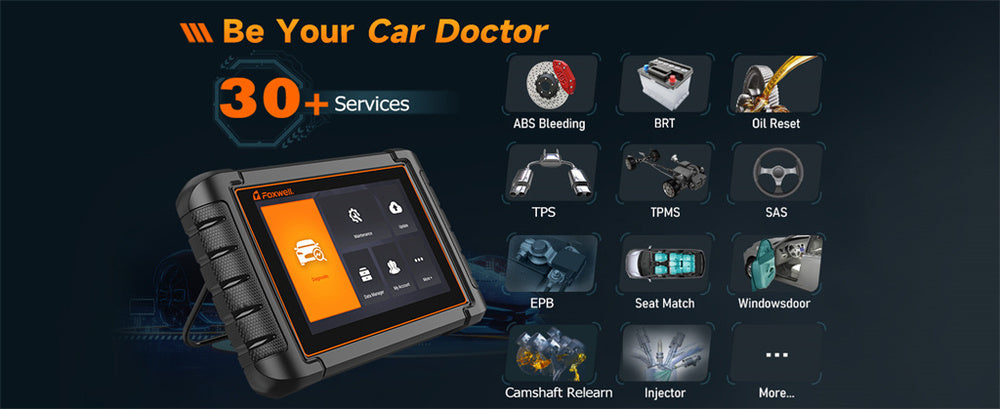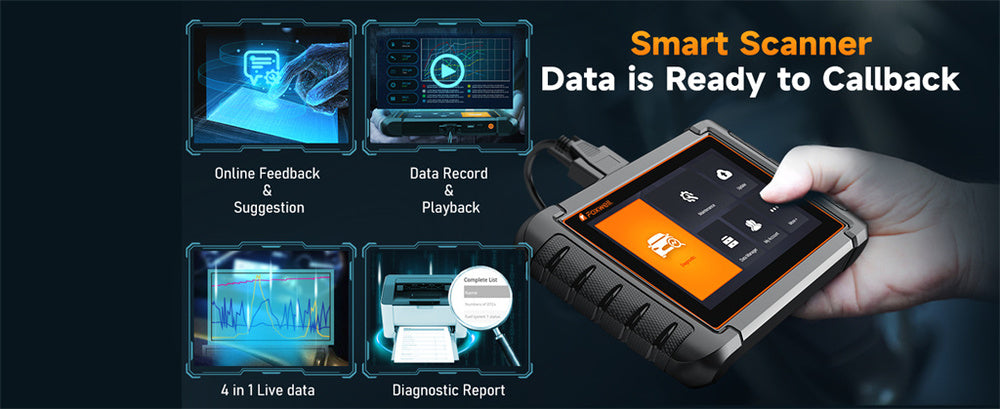Smog Checks are an essential part of keeping our environment clean and our vehicles operating smoothly.
However, when preparing for one, many may experience an unnerving scenario: your I/M Readiness report appears satisfactory, but it still fails the Smog Test.
This often leaves car owners baffled; their I/M Readiness report might look perfect, yet their vehicle still failed emissions testing despite this claim being falsely positive.
Here, we'll examine why this occurs and provide insight into its causes as well as diagnostic tools to prevent future failures. Understanding this difference will keep your car on the road and help you avoid surprises during its next Smog Test!
Understanding I/M Readiness and Smog Check

Understanding the difference between I/M Readiness and Smog Check is often confusing to car owners, even experienced ones.
Let us demystify both terms: I/M Readiness refers to your vehicle's self-monitoring system for emissions control components; its purpose is to test these systems prior to testing them for emissions compliance.
When its status is "good", this means your onboard diagnostics (OBD) system has checked these systems thoroughly without discovering any severe issues that would prevent its operation usually.
The opposite would apply when conducting Smog tests or conducting Smog checks in conjunction with tests of emissions compliance testing of emissions control components or components if applicable.
Conversely, a Smog Check is a government-mandated test designed to measure the actual emissions produced by your car—like a health exam for its exhaust system.
While your I/M Readiness status helps indicate whether your car is ready to pass this examination, I/M Readiness doesn't guarantee success, as Smog Checks require actual performance measurement rather than preparation alone. That is an important distinction!
Why I/M Readiness Looks Fine, but My Car Failed the Smog Check
A common query among drivers who fail the Smog Test is why their I/M Readiness report indicates everything is all right, but they still fail it. Unfortunately, sometimes, there may not be an obvious explanation.
Your car's onboard diagnostics might not detect every issue. I/M Readiness can only identify critical systems, and it won't always pick up problems like an aged catalytic converter or malfunctioning oxygen sensor that causes excess emissions.
Second, some issues only become apparent during an actual driving test. Your OBD system can monitor for problems but isn't 100% effective at picking them up - for instance, an exhaust leak might not set off any codes in the system.
However, it could still result in failed emissions tests because actual emissions exceed what the car "thinks" it's producing.
Finally, the I/M Readiness needs to take into account every state's smog regulations.
Each state may have different thresholds for acceptable emissions levels, but just because your car is "ready" doesn't mean it has passed all local requirements.
Common Reasons for Failed Smog Check Despite an I/M Readiness Report
One common reason for failed smog checks despite an excellent I/M Readiness Report is an oxygen sensor malfunction.
This sensor measures the amount of unburnt oxygen in your exhaust, so when it malfunctions, your vehicle could burn fuel inefficiently, leading to higher-than-usual emissions; it can trigger dashboard warnings but cause Smog Check failure nonetheless.
Your vehicle could also have been failing a test due to issues with its catalytic converter.
The catalytic converter plays an essential role in reducing emissions by converting dangerous gases into less hazardous ones; if worn or damaged, your car could be emitting more pollutants than allowed and failing the test even though your I/M Readiness report shows all is in order.
Believe it or not, a leaking gas cap can also contribute to Smog Test failure. When loose or damaged, gas caps allow fuel vapors to escape into the atmosphere and increase emissions—an easy fix that could make a difference.
Exhaust leaks are another hidden factor. By allowing extra air into your exhaust system through these leaks, these extra leaks skew emissions test results. Even minor leaks that do not impact how your car drives could lead to its failure.
Incomplete driving cycles could also play a factor. If you recently reset your vehicle's system (perhaps after disconnecting its battery), then its onboard diagnostics may not have had enough time to monitor all emissions-related components in full.
And your car could fail because nothing has had time to prove itself as functioning normally even though its I/M Readiness report appears normal.
How to Diagnose and Fix Issues After a Smog Check Failure

So your car failed the Smog Check—what’s next? Don’t worry, this isn’t a death sentence for your ride. Here’s what you can do:
- Use a Diagnostic Tool: Plug an OBD scanner into the vehicle to read any Diagnostic Trouble Codes (DTCs), which provide clues as to what has gone wrong with its engine. Tools like Foxwell NT1009 make this process even simpler.
- Check for Leaks: One of the easiest ways to test for leaks is to check for exhaust leaks or loose gas caps. Even small leaks can interfere with tests and cause havoc.
- Oxygen Sensors: Is Your Car Guzzling Gas Lately? Changing out oxygen sensors could quickly solve this issue.
- Examine Your Catalytic Converter: If your converter is damaged or clogged, replacement may be required as this is often more cost-effective for passing tests.
- Complete a Full Driving Cycle: Make sure you've driven your car enough to allow the onboard system to monitor everything properly.
This usually involves driving for several days under various driving conditions, such as city, highway, and stop-and-go conditions.
Preventative Measures to Pass Your Next Smog Check
In order to successfully pass Smog Check exams in the future, routine vehicle maintenance such as oil changes, replacing air filters, and checking fluid levels is of vital importance in keeping emissions systems in optimal working order.
Even though such activities might appear irrelevant to emissions management systems, a properly running engine produces fewer pollutants over time.
Driving regularly also helps keep emissions systems in check. If your car mainly sits or only sees short trips, its exhaust and catalytic converter may not run long enough to clean itself effectively; taking long drives on highways helps the system burn off excess carbon deposits and lower emissions levels.
Before heading in for an official Smog Check, it may also be beneficial to have your vehicle undergo a pre-inspection.
Many mechanics provide this service so they can identify potential problems early and help resolve them before heading in for testing.
As soon as your check engine light illuminates, please don't ignore it. A lit Check Engine Light increases the risk that your car will fail the Smog Check test; even if it's something minor like a sensor glitch that needs fixing before taking the exam, it could save your pass rate and prevent failure.
Checking the gas cap is also key; even simple fixes like loose or damaged gas caps can result in serious fuel vapor leaks, leading to engine failures and further headaches.
Make sure yours is tightly sealed and in good condition before conducting tests, as this quick check could save a lot of hassles down the line, including an unnecessary failure.
Conclusion
Failing a Smog Check despite having an excellent I/M Readiness report can be discouraging and surprising, yet it isn't uncommon. Issues such as faulty sensors, leaking gas caps, and incomplete driving cycles may lead to emissions tests failing.
By regularly maintaining your vehicle using OBD scanners to identify issues early and taking preventative steps such as regular vehicle maintenance visits with preventative maintenance measures taken as preventative steps, you can significantly increase your chances of passing future exams with ease.
While I/M Readiness only tells part of the story, so by taking steps like these, you'll keep both yourself and the environment healthier!
FAQs
Can you pass smog with a monitor not ready?
In most states, your vehicle can pass the Smog Check if only one emissions monitor is not ready. However, if more than one is incomplete, your car will likely fail the test.
How many readiness monitors can be incomplete in CA?
In California, for gasoline-powered vehicles from 1996 and newer, you are allowed to have one incomplete readiness monitor and still pass the Smog Check. For diesel vehicles, all monitors must be complete.
How to make a car pass smog?
To pass a Smog Check, ensure your car is properly maintained, address any check engine light issues, drive the car enough to complete readiness monitors, and check for simple fixes like a secure gas cap and no exhaust leaks. Regular diagnostics can help catch issues early.




Leave a comment
This site is protected by hCaptcha and the hCaptcha Privacy Policy and Terms of Service apply.